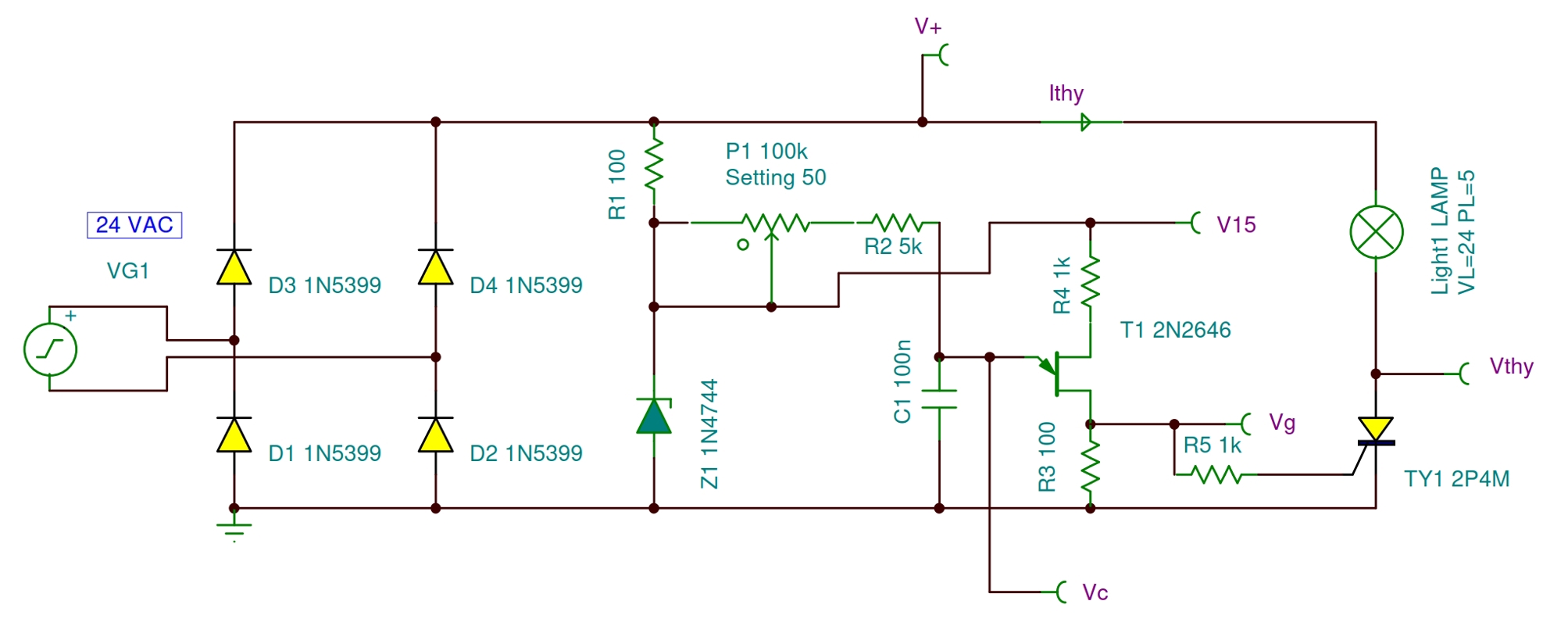We implemented the aforementioned circuit, and the relaxation oscillator is working fine. However, the load voltage waveform (load hooked with SCR anode) is the same as the rectified supply - the firing angle is zero, and changing the potentiometer doesn't cause any change in the firing angle.
So, the SCR is remaining in conduction mode, through and through, irrespective of the gate signal. We thought that it could be a dV/dt issue, the rate of change of voltage across the SCR is too high, so added a snubber circuit, but that didn't fix anything either. So yep, no solution so far.
A peculiar thing happened however - our professor told us to remove the rectifier, and apply 24V AC supply directly across the zener(we are using a center tapped 12-0-12 transformer for supply). Lo and behold, the firing angle of the SCR is controllable now, although only for the positive half-cycles, of course.
So the half-wave arrangement is working, but not the full-wave rectified one. What could be the issue here?
List of components:
- Power Diodes for rectifier: 1N5399 [1 kV, 1.5 A]
- RD = Cement-type Resistor [100 Ω, 5 W] (All the other resistors are regular quarter-watt carbon resistors.)
- Zener Diode 1N474A [15 V, 1.3 W]
- Potentiometer [100 kΩ]
- (104) Ceramic Capacitor [0.1 µF]
- UJT 2N2646
- SCR 2P4M
- Load: 30 ohm rheostat










